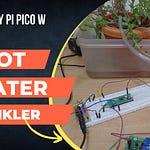Fixing PIP Errors & Mastering Python Virtual Environments on Windows
Python is an incredibly versatile language, but setting up your development environment can sometimes feel like navigating a maze, especially on Windows. We all have those struggles :). Two common areas where people often stumble are those nasty PIP errors and correctly setting up Python virtual environments. This guide, will demystify these processes, helping you get your Python projects running smoothly and avoid common pitfalls.
Why Virtual Environments?
Virtual environments create isolated setups for different Python projects [00:14]. This is incredibly useful when projects require different versions of the same library, preventing conflicts and keeping your main Python installation clean. Each project can have its own dedicated packages installed without affecting others [00:48].
Installing Python Correctly
To avoid common issues from the start, pay close attention during Python installation:
Download Python from python.org
During installation, choose "Customize installation"
Crucially, check "Add python.exe to path" and "Use admin privileges"
Ensure all optional features, including "pip," are selected
On the next screen, select "Install Python for all users"
Avoiding PIP Errors on Windows
PIP (Python's Package Installer) is essential, but errors are common. The most critical advice for Windows users is to always run Command Prompt as Administrator when using pip install commands
If you don't run as administrator, packages might install in a user-specific location not on the system path, leading to "command not recognized" errors [05:06], [05:49].
Installing the Virtual Environment Package
Once Python is correctly installed and your Command Prompt is running as Administrator:
Open Command Prompt as Administrator.
Run the command:
pip install virtualenvYou can verify the installation by typing
virtualenv --version
Creating and Using a Virtual Environment
With virtualenv installed, you can now create isolated environments for your projects:
Create an environment: Navigate to your project directory in the Command Prompt and run:
Bash
virtualenv myenv
Replace
myenvwith your desired environment nameActivate the environment:
Bash
myenv\Scripts\activate
(Note the capital 'S' for Scripts) Your command prompt will now show the environment name in parentheses (e.g.,
(myenv)) to indicate it's active.Install packages: Once activated, any packages installed using
pip install <package_name>(e.g.,pip install requests) will be specific to that virtual environment and won't affect your global Python installation or other environmentsYou can view installed packages within the active environment using
pip list
Demonstrating Isolation
The power of virtual environments lies in their isolation:
The video shows that packages installed inside an active virtual environment (e.g., 'requests') are not present when the environment is deactivated and
pip listis run globallyConversely, a package installed globally (e.g., 'flask' [09:50]) will not appear in the
pip listof an activated virtual environment unless explicitly installed there
Deactivating a Virtual Environment
When you're done working in an environment, simply type deactivate in the command prompt to return to your global Python installation [09:34].
By following these steps, you can confidently manage your Python projects on Windows, avoiding common PIP errors and leveraging the power of virtual environments for a cleaner, more stable development workflow.
Source Video:




